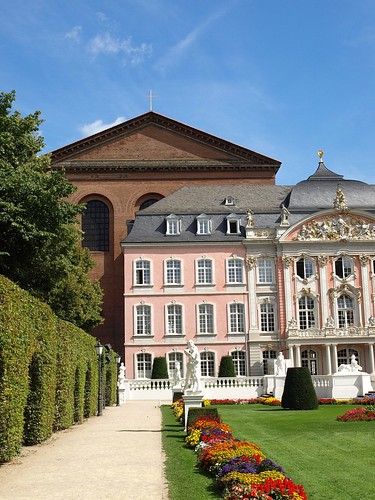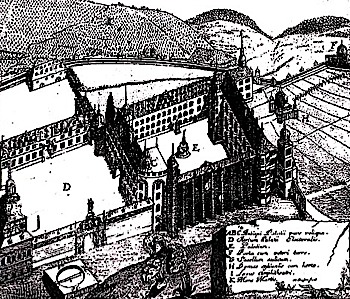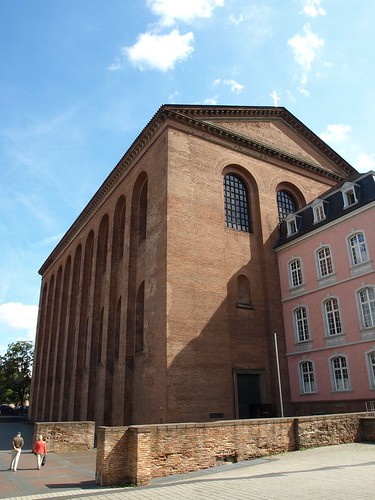The building now known as the Basilika in Trier, Germany was actually the throne room of the Emperor Constantine and formed part of a wider palace complex when the city was a capital of the Roman Empire. The footprint of the Roman building (c 310 AD) and elements of its enclosure survived centuries of change prior to reconstruction by the Prussians following the defeat of Napoleon. The illustration shows elements of the building (‘c’ is the Roman apse) incorporated into a palace complex during the Renaissance period.
The extraordinary juxtaposition of the Basilika and the baroque palace in front is explained by the new significance of the building following the continuing unification of Germany under Prussia. Frederick William IV of Prussia ordered the reconstruction of the 33m high ‘basilica’ as a Lutheran church – a project that was completed in 1856. The building is remade to correspond with a new function and and rises up to dominate the palace structure it had served for centuries. The Prussian structure reflected the architect’s ideal project – the reconstruction of a Roman ruin. The architect interpreted the remains as an early-Christian basilica and borrowed the organization and stylistic elements of early-Christian architecture in Rome.
The building was destroyed by allied bombs in 1944 and reconstructed again in the ‘fifties. The destruction of the Second World War was interpreted by some as a judgement. In its newest form the great hall was stripped of all decoration and given a pre-stressed concrete coffered roof. According to the official history available in the church: The new idea of the reconstructed church can be interpreted as follows: expression of worldly power and its spirituality has been conquered and extinguished by the Nazarene’s message: to put service before all else.




thanks for this summing up of the basilika’s history. I always wondered about this building which is so clearly a reconstruction – but a reconstruction of a reconstruction, who would have guessed…
How was the roof supported? It is an amazing piece of architecture!
thanks seier+seier. The Allies forced a lot of reconstruction and reinterpretation…
Bruce Mitchell: I assume the original Roman building had a trussed and coffered roof of timber. The post-war reconstruction has a concrete coffered ceiling.